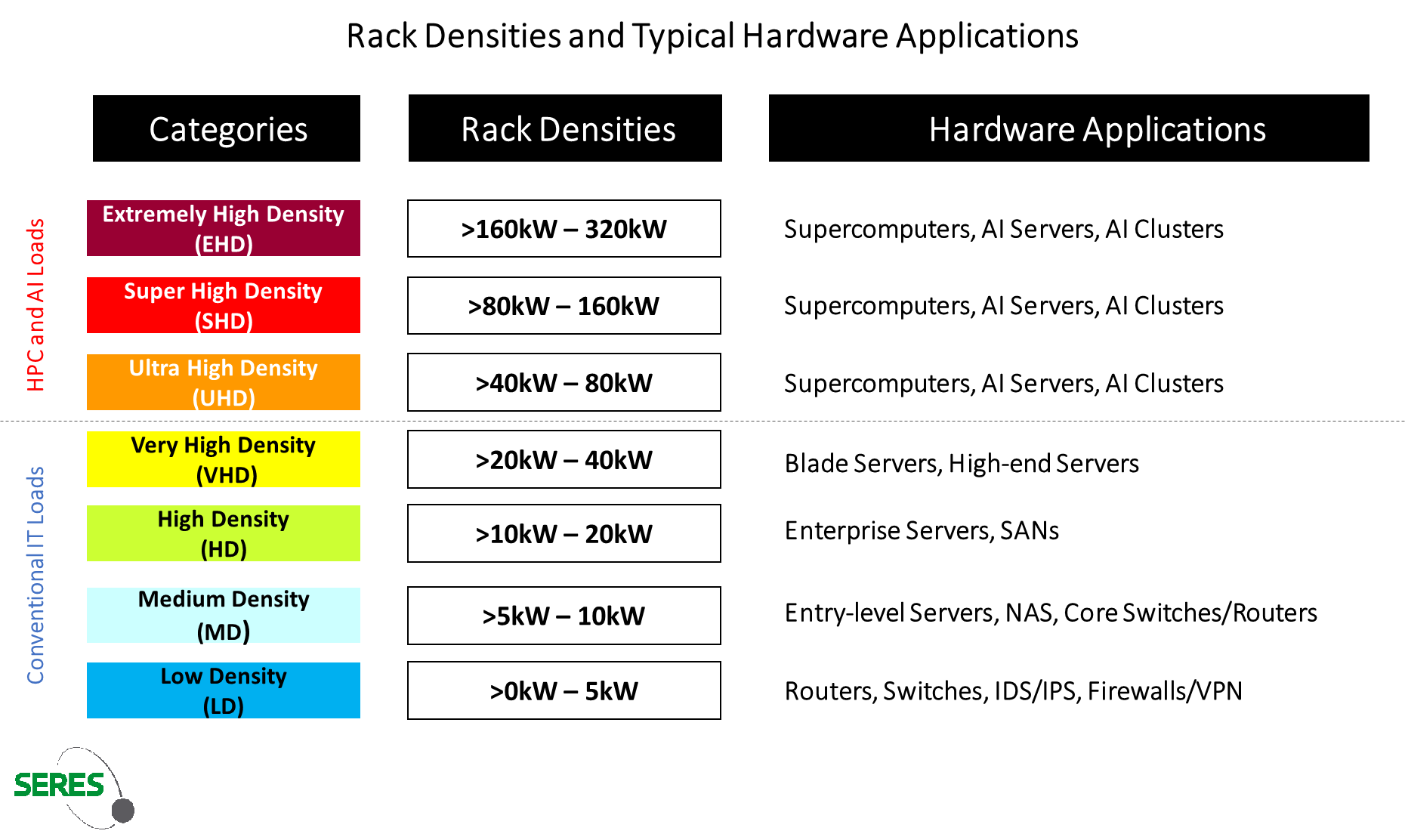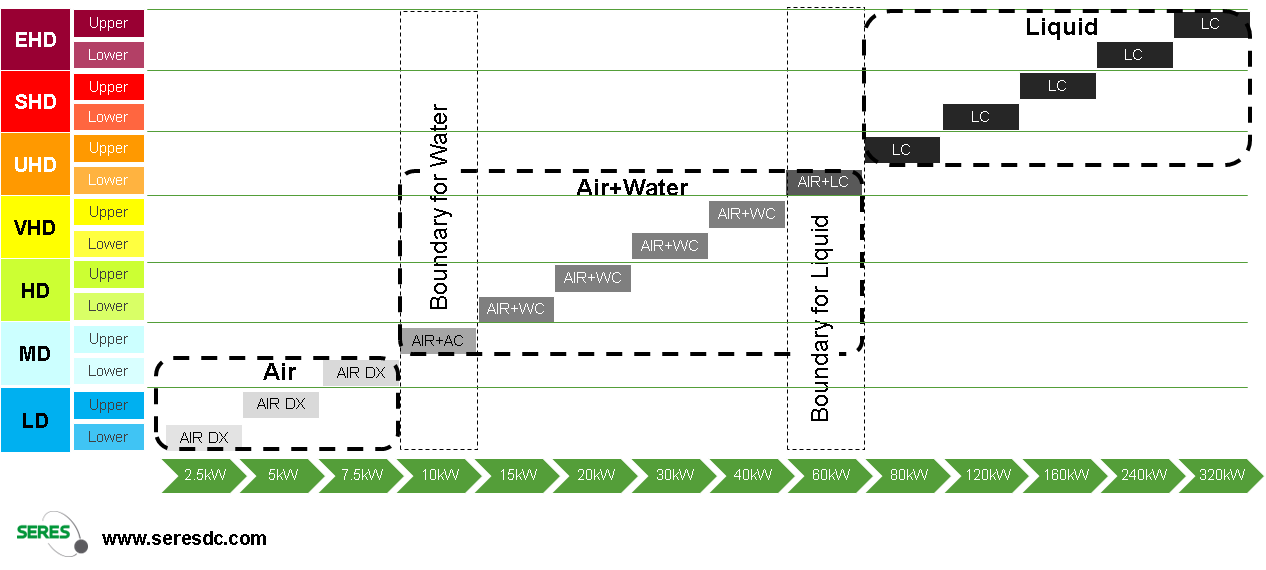
Classification of
Rack Densities
A New Framework…
What are Rack Densities ?
Rack Density is a measure or metric that quantifies how much power an IT Equipment Rack (apply also to Telco Racks) can consume. Rack Density might refers to:
Average Rack Density: Average of Rack Power Consumption of a group of Racks.
Design Rack Density: Maximum Power (peak) at which an IT Rack is designed. As Racks are in fact passive containers, it is refer to the maximum allocated power according to the Rack space.
Rack Density is an important metric since it can be easily correlated to hardware applications, i.e. Servers, Network devices, Storage products, etc. Also, as the units are based in kilowatts, it has a direct relationship at facility level in order to determine the capacity of Electrical Components and Distribution Systems, as well as Thermal Systems.
Rack Density Categories
Rack Densities and Typical Hardware
Source: “Rack Density Classification in the Age of AI”. 7x24 Exchange Magazine - 2025 Fall Issue
Greater than 0kW up to 5kW
Greater than 5kW up to 10kW
Greater than 10kW up to 20kW
Greater than 20kW up to 40kW
Greater than 40kW up to 80kW
Greater than 80kW up to 160kW
Greater than 160kW up to 320kW
The proposed terminology is borrowed from the Telecommunication Radio Spectrum. Each Rack Density category doubles from one to the next. VHD (>20kW to 40kW) is a bridge category that might support some conventional IT Load, as well as some AI Loads.
Abbr.
Rack Density Category
Range
LD
MD
HD
VHD
UHD
SHD
EHD
Low Density
Medium Density
High Density
Very High Density
Ultra High Density
Super High Density
Extremely High Density
This approach helps to easily identify Rack Densities with their typical workloads:
Conventional IT Loads (Up to 40kW/Rack)
HPC and AI Loads (Greater than 40kW/Rack)
Cooling Technologies and Rack Densities
HPC vs AI Systems Rack Densities Trend
Understanding Rack Densities with their corresponding most useful cooling technology.
Rack Densities help in identifying and correlating:
IT Equipment power pattern
IT Equipment types/Performance
Cooling Technologies
Comparing Supercomputers with AI Systems, gives a sense of where we are today in terms of relative power consumption. AI Systems, should surpass Supercomputers in terms of Rack Density, possibly in this very decade, because of the market development pressure.

Understanding Extreme Rack Densities
Credits: Oak Ridge National Laboratory
Extremely High Rack Densities
Extremely High Rack Densities are related to potential future HPC and AI Loads
Comprises of four additional Rack Density categories related to the EHD (Extremely High Density) category (EHD: >160kW to 320kW)
Very EHD
2xEHD
>320kW to 640kW
500 kilowatt Category
VEHD
Ultra EHD
4xEHD
>640kW to 1280kW
1 Megawatt Category
UEHD
Super EHD
8xEHD
>1280kW to 2560kW
2 Megawatt Category
SEHD
Extremely EHD
16xEHD
>2560kW to 5160kW
3-5 Megawatt Category
EEHD
EHD
>160kW to 320kW
How New Rack Density Categories help Comparing Scenarios
Our New training dedicated on how to support AI Systems (Hardware) in the Data Center is here, please take a look at:
A Glimpse into the future.
We created this Rack Density framework to better understand, and being able to compare different systems and technologies related to IT power density.
We are very close to enter into the arena of EHD (Extremely High Density) Rack Density, according to our framework it starts at 160kW/Rack.





